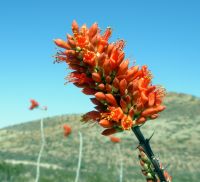
|

|

|
 |
 |
 |

When you tell people that you intend to go back to hike a long trail for the second (or third) time, the question inevitably arises, “Why go back to hike the same trail? Why not hike somewhere new and different?” It’s a valid question. Life is short and there are many beautiful places to explore. But sometimes a place is so special it calls you back - sometimes again and again. The Continental Divide is one of those very special places.
Besides, although you have hiked in an area, that doesn’t mean you really know it in any depth – that takes time and multiple visits. Each time you return the experience is different, whether because the place has changed or you have changed, or the season, or the people you encounter, or merely the time of day. There are always new things to discover. And memories fade, so there will be moments of warm familiarity and homecoming and other moments when you tell yourself, “I don’t remember this at all.”
What you expect out of a hike is different the second time around. The first time you hike, you feel curiosity and uncertainty. What will the trail be like? Can I do it? Will I enjoy it? The second time you ask yourself, “Where should I go? What do I want out of the experience? How can I make the most of my journey?” The destination becomes less important than the journey itself. Which, of course, should have been the case for the first hike - but rarely is.

The Continental Divide Trail (CDT) adds another element to this: while there is a designated official trail for most of the route, long distance hikers have developed a tradition that encourages multiple routes for hiking from Mexico to Canada (or vice versa). Jim Wolf describes alternate routes in his guidebooks and Jonathan Ley has created a map set that includes some of those alternates plus a few of his own. Each hiker picks and chooses among various options out of the guidebooks and maps - or creates new alternatives to suit his or her needs. Each hike can thus be unique. Some options add miles, some shorten the journey. Some add scenic detours or allow for climbing side peaks. Some are necessitated by weather or water considerations or injury. Even those intending to hike only the official route usually end up with some alternate routes, especially in those areas where the official trail is dry while the alternate routes have water sources.
Before we finished our first thruhike on the CDT, we were already planning to come back. We wanted to explore some of the options we hadn’t chosen the first time. We decided to go south to north the second time so we could experience familiar areas at a different time of year. Colorado and Montana are very different in June and October.

At least a quarter of our hike was totally new trail for us, from the first 250 miles in New Mexico to the completely different route we designed through Yellowstone and Southern Montana to alternate sections in the San Juans, Indian Peaks, Bob Marshall Wilderness, etc. Sometimes we chose to go back to our previous route because it suited our needs best even though there were alternates we hadn’t tried. It was our hike, all the way. And it was a great hike – beautiful, challenging and fun.
Are we finished with the CDT now? ‘Fraid not. There are still places we never got a chance to explore – and others we want to go back to see again. The CDT is still calling to us, inviting us to discover new areas of the Rocky Mountains. It would take a lifetime to really know the Continental Divide in any depth. In the meantime, we’ll explore what we can, when we can. Our journeys are just beginning.
Home | Links| Trail Journals |
The Thruhiking Papers | Bun-bun
Created: Dec 2006
Revised: 30 Sept 2016Copyright © 2006-2017 Spirit Eagle